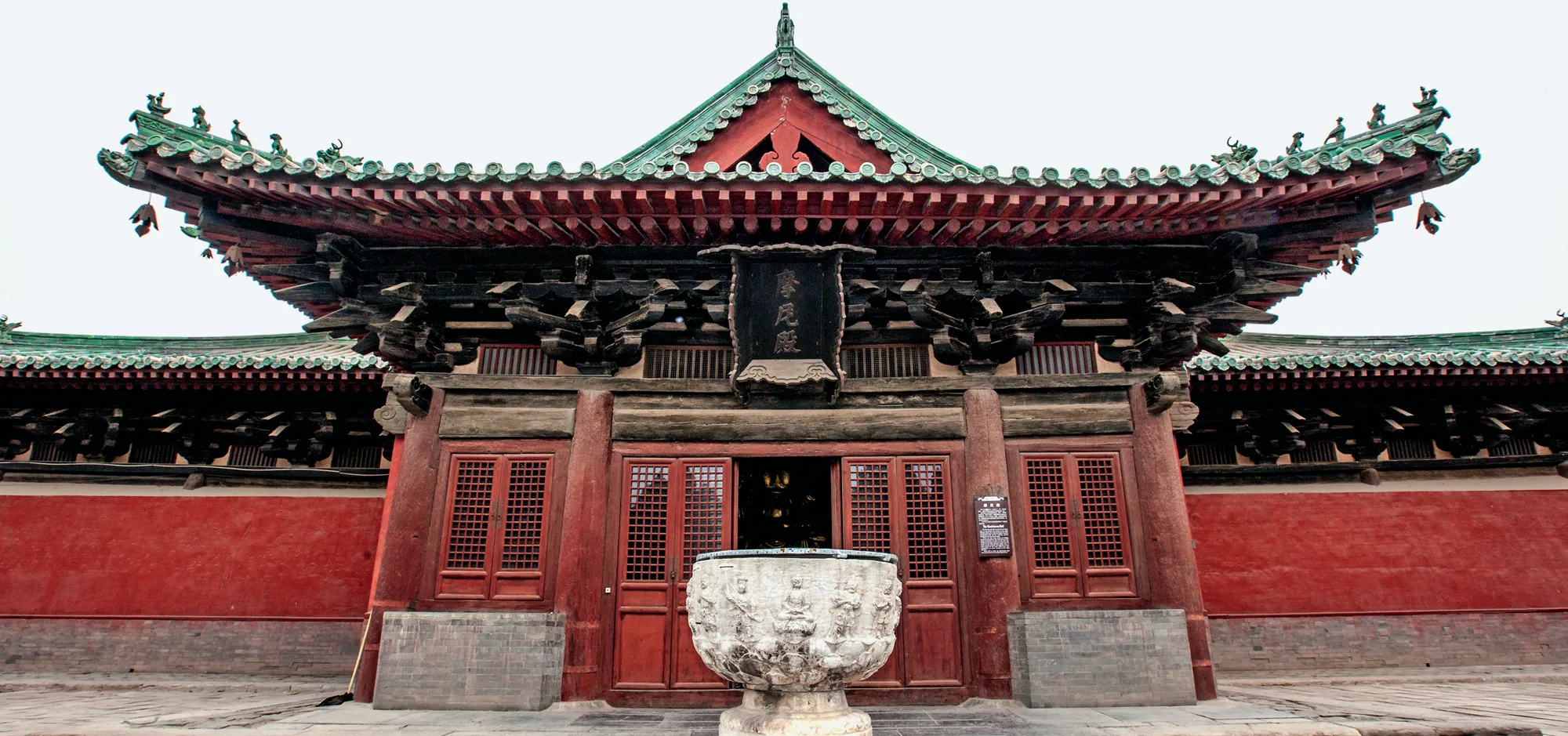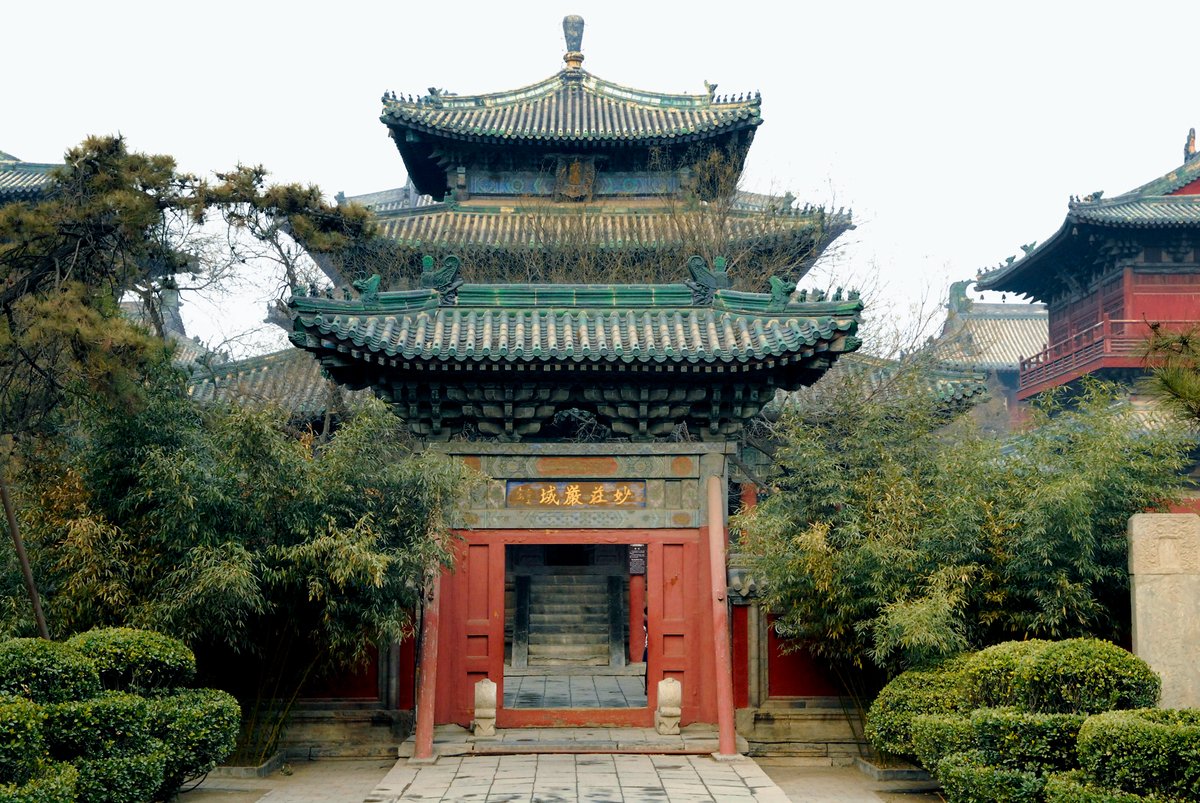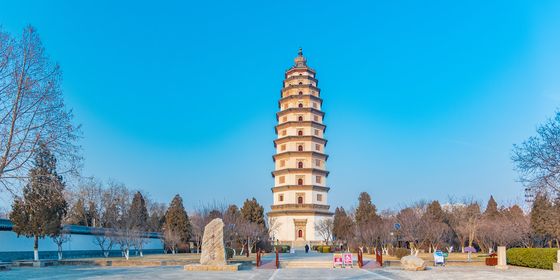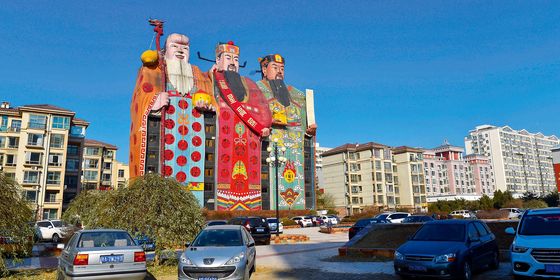Hebei province’s Zhengding city is a treasure trove of preserved ancient Chinese wooden structures, thanks to the efforts of master architect Liang Sicheng
When the “Father of Modern Chinese Architecture” first discovered the quiet magic of Zhengding (正定), he was ecstatic. On his journey there, soldiers and military officers hopped on and off the train, chatting about tension and conflicts while rushing to their posts as the war against Japan loomed large. But, as soon as the then 32-year-old Liang Sicheng (梁思成) arrived in Zhengding, he was engrossed in its ancient structures, monuments hidden in an otherwise plain community.
Liang would later travel to more than 2,000 counties across the nation in the tumult of war to complete the first systematic, historical account of ancient Chinese architecture. It was, however, always Zhengding to which the great man returned, time and time again.
Today almost every historical site in the country is swiftly turned into a profit-generating tourist trap, but this architectural wonderland of Liang’s is often left unnoticed. Following in the curious architecture pioneer’s steps, I decided to investigate the mysterious charm of this hidden gem and to, more importantly, discover what remained.
While in 1933, the young Liang endured a bumpy train ride from Beijing of nearly ten hours, I took a ride of only an hour and 20 minutes to Shijiazhuang, the capital of Hebei province, and from there another 30 minutes taxi ride north to Zhengding. On the other hand, while my journey was overshadowed by a smog-laden haze over the farms, Liang would have had the luxury of blue skies. Such is the unfortunate gamble of modernity.

In 1938, with the Anti-Japanese War in full bloom, Liang Sicheng (second on the left), his wife Lin Huiyin (fourth on the left), and their two children moved south to Kunming, where Liang continued his studies of ancient Chinese architecture. The above image was taken during a visit to Huating Temple on Xishan Mountain in Kunming. (Fotoe)
“The impression from my first few minutes told me that Zhengding was beyond all my expectations. But at the time I was still clueless about the many treasures hidden among the crowded houses in front of me,” Liang wrote enthusiastically about his trip in the article “A Brief Record of a Zhengding Survey” published later that year in the Journal of the Society for the Study of Chinese Architecture.
Alas, the inspirational beauty of Zhengding is perhaps not so obvious at first sight today. Like many small towns, Zhengding’s layout largely centers on its local government, which in this case is a two-story white building deprived of any character. Along the streets, mottled short gray buildings are decorated with plastic shop signs in primary colors, advertising wedding photo services, baby supplies, and restaurants, and a considerable number of shops selling hearing aids. Behind these street stands a residential area consisting of identical apartment buildings. Indeed, if this were a symbolic foreshadowing of what the rest of the town held, Liang’s wonderland would need to be declared dead on arrival.
He wrote of the streets at the time: “On every screen wall, there’s a small shrine…oleanders or a willow tree casting scattered, cooling shadows on the wall; it’s the same for every family, as if they all live in a boundless peaceful and quiet world.” The rigors of time have since rendered this description obsolete.
Locals tend to point tourists to Yanzhao South Street, claiming it leads to an area bristling with relics. A few blocks into the street one is able to easily find the local government’s answer to tourism, with a replica of a commercial street from antiquity—with most of the shops closed and pedestrians almost nonexistent.
“We don’t get many visitors,” one pedicab driver said. “Only lovers of old buildings know about the place and stop by sometimes, but there are only a small bunch of them.” While this appears, at first glance, to be a downside, the government’s financial failure could very well be to the credit of the centuries-old relics. By comparison, one of the most popular sites in the country, the Mogao Caves in northwest China, is mobbed by an overflow of tourists and the sites there have suffered because of it.
At almost 40 meters tall, the square brick Sumeru Pagoda (须弥塔) is the first notable landmark along the road. For a reasonable 15 yuan entrance fee, travelers can enter the temple’s submerged courtyard, an immediately striking sight because the temple does not follow the all-too-familiar symmetrical plan found in so many Chinese monasteries today. Instead, it follows the Tang style, with the pagoda and the bell tower standing side by side behind a main hall that once featured a Buddha statue.
Liang himself was indifferent to the statue, referring to it as a tacky feature built in the recent Qing dynasty (1616 – 1911), while the temple itself dates back to the Northern Wei dynasty (386 – 534). Of course, to the untrained eye, the Buddha statue would probably cut a decent figure for most modern travelers, but it fell unceremoniously to the Cultural Revolution in the 1960s.
Walking among the broken pillars and damaged stone carvings, one has the opportunity to view the pagoda, which is luckily still intact. The late afternoon sunshine touches its crude brick surface, adding warmth to its earthy hue. Though it has undergone numerous repairs over the years, the pagoda maintains its original features and is clearly a relic from an ancient time of simplicity. Its name comes from a sacred mountain in Buddhist cosmology—the center of all universes.
Here, in the absence of motor-heavy noises from the street or scrambling tourists, the only sound is that of iron bells hanging from the roof edges tinkling in the breeze—installed to ward off birds. This temple has a more famous twin in Xi’an, the Wild Goose Pagoda, accompanied by swarms of photographing tourists, but in this obscure, quiet town, the wonderful slice of ancient Chinese architecture is a solitary gift. I found myself beginning to understand the charm of this place.
Admiring the bell tower with its distinct gable and hip roof so characteristic of the Tang dynasty, it dawned on me that not even Liang himself had the chance to enjoy such peace while relishing these relics. According to his records, the temple was used as a training school for local police officers at the time of his visit, and the much-cherished bell tower served as a dining hall for the trainees. They were volatile times and peace stood on a knife’s edge.
Liang surveyed, photographed, and sketched these buildings and structures meticulously. Sadly his sketches are some of the only evidence left of their existence.
Perhaps the greatest loss in Zhengding is that of Yanghe Tower (阳和楼). For more than a century, the tower stood as a local cultural symbol where the public would gather and entertain. Built over the main street to the south gate, Liang described it as “leaving a similar impression as the Tian’anmen Tower…its grandeur excelled the Arch of Constantine in Rome.” Unfortunately, the tower was claimed in the ravages of the Chinese Civil War, and its last vestiges also fell victim to the madness of the Cultural Revolution. A small traditional opera stage named “Yanghe” is all that remains near the tower’s original location.
In 1966, with the revolution inspiring a nationwide zeal to eradicate the old, and Liang tried to do what he could to save his beloved town. He called the local cultural relics protection department, asking to take down the wooden doors of the bell tower of the Tang-era Kaiyuan Temple (开元寺), likely the oldest wooden structure in Hebei, for safekeeping. “They won’t survive if left there,” he told them. He saved them, but there was much more that he couldn’t protect.
A few hundred meters south, Linji Temple (临济寺) is the next destination of note. Unlike other temples, it is a fully functioning temple with monks practicing inside. Supported by believers, the temple does not charge an entrance fee. Following the blue incense smoke floating above the pine trees, I discovered an altar at the foot of a pagoda called Lingcheng Pagoda (灵澄塔), the only surviving ancient structure in the entire temple.
An old lady in bright pink piously prayed, murmuring and bowing to the tower, stopping from time to time to light another stick of incense on one of the many red candles in their lotus-shaped crystal bases. She turned to me and kindly suggested: “Go around the pagoda clockwise and you will be blessed.” She wondered why I, who she called “young and beautiful,” would want to take a picture of her praying; but there in that earth-toned temple, with her praying silently and carefully, it was she who looked beautiful.
At that, a sound of chanting emanated from the stones of the temple, leading me to a brightly lit hall filled with monks and believers as they recited sutras. It was their evening lesson of the day. It was the first time I saw so many people gathered together since I had arrived in town. What they were chanting was a mystery, but its steady, melodious sound calmed and comforted me. For all that was obliterated in the past century, the boundless world of peace and quietness so sacred to Liang still existed in Zhengding after all.
Liang’s surveying work was mostly done in Longxing Temple (隆兴寺) in the southeast. Called “Big Buddha Temple (大佛寺)” in the folksy parlance of the area, it was one of the emperor’s royal construction projects during the Song dynasty (960 – 1279), which ranks high in terms of grandeur throughout the nation. Today’s admission runs at 30 yuan, but Liang instead had to gain the permission of a machine gun company commander when he first visited. He recorded his amusement at the slogans on the wall of the time, such as “The Party’s authority supersedes everything else” and “Three Principles of the People.” The “Party” in this case referred to the Kuomintang.
The temple’s abbot kindly accommodated Liang and showed him around. From what he saw, the temple’s glory from its old days was long gone, leaving only the major structures standing. These structures were in such a serious state of disrepair that the main hall’s roof and upper level were gone, revealing a 20-meter-tall bronze statue of the bodhisattva Guanyin, curiously missing her 42 extra arms on the back.
But Liang was still ecstatic with his finds, going on to discover various delicate wooden structures with the excellent craftsmanship for which the Song dynasty is so revered. He worried that the imminent war would take everything with it, so he worked diligently during his time here, measuring and recording everything.
Liang would enjoy the sight of Longxing today, as many of the sites have been carefully restored and repaired over the years. More importantly, it has been done without destroying the sense of antiquity with modern structures, overly bright paint, or garish decorations familiar to so many other renovation projects. I, too, marveled at the grand bracket sets and beams so much a feature of ancient Chinese architectural techniques.
Wandering in the temple’s 82,000-square-meter courtyard, visitors are followed by a sense of solemnity and awe. And, in many ways, this is all due to Liang’s advocacy. As a matter of fact, Liang and his wife Lin Huiyin (林徽因), who was also an architect, were responsible for the prototype of today’s “Index of National Cultural Artifacts Preservation” that put Longxing Temple and many other sites under national protection. The survey he conducted also left valuable information for their renovation.
Liang’s love of the ancient was not limited by national boundaries. In the fall of 1944, when the Allies were closing in on Japanese soil, Liang helped to list Japanese historical relics and marked them on the map for the Allies to protect as much as they could during the bombing. Through the Chinese authorities, he advised the Allies to avoid Kyoto and Nara during the attack, two ancient Japanese cities filled with relics. In 1985, Asahi Shinbun reported the story, calling Liang “the benefactor of the ancient capitals.”
His own country’s heritage, however, was not as easy to protect. Liang was able to raise attention for the protection of China’s relic sites, but this ultimately took a heavy hit when the political climate changed. In the 1950s, his plan to relocate the city center of Beijing to the west, thus leaving its relic-filled heart alone, was criticized and ignored. During a drawn out battle with local officials, Liang’s wife fell ill and died in 1955; Liang died in the Cultural Revolution 17 years later.
Liang left an important legacy; his fruitful academic research, countless works, and passion for the preservation of traditional architecture carried innumerable sites around the country and the world through unimaginable chaos. And Zhengding, a town so small that it seems to have slipped through the cracks of time, maintains its gorgeous Confucius temples, Buddhist monasteries, pagodas, steles, and statues—largely down to Liang.
At Tianning Temple (天宁寺), a few hundred meters west of Longxing Temple, I met three builders erecting a stele at the foot of the temple’s Lingxiao Pagoda (凌霄塔). They told me it was built in memory of nine foreigners, who were Catholic martyrs. The story of how they came to be honored in a Buddhist temple is a heroic and tragic one. In 1937, Vincentian bishop Frans Schraven and eight of his companions from the Netherlands, Austria, and France offered protection to the women and children in Zhengding in the cathedral when the town was occupied by Japanese soldiers. They refused to yield and were killed and burned at the foot of Lingxiao Pagoda. “The people of Zhengding will never forget these international friends,” the man said as I watched the three of them erecting the stele, patting the ground, and wiping the last bits of dirt from the surface. So much history for such a small town.
As for its lost relics, in February of 2015, the Architectural Design and Research Institute of Tsinghua University was hired to restore Yanghe Tower in Zhengding. As the founder of Tsinghua’s architecture department, Liang seems to have given Zhengding one last gift. Many say a replica is pointless, but, if nothing else, looking at a lost cultural symbol, we may be reminded of the town’s suffering through war and chaos—a warning to preserve our fragile and sometimes irretrievable architectural heritage.
This is a story from our archives. It was originally published in our 2015 issue “Startup Kingdom” under the title ”Brick by Brick,” and has been lightly edited and updated. Check out our online store for more issues you can buy!















